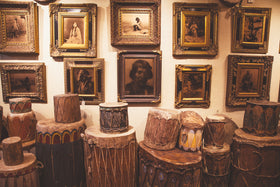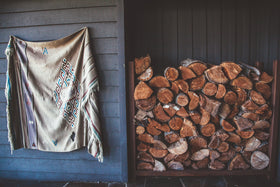Skookum Dolls

The original skookums were first produced by Mary McAboy in Missoula, Montana. In 1913, McAboy obtained a US patent for a brave-style doll. She registered the skookum name as a trademark in 1919, as well as the “Bully Good” trademark. Interestingly enough, McAboy attributed the word skookum to a Siwash Indian language, claiming it meant “bully good.” Unfortunately, there is no such Indian tribe or language as Siwash on the North American continent. Salishan is the language used by the Algonquin, Flathead and Plateau tribes. They call themselves “Salish” which means “the people.” It is easy to see how this name may have morphed into Siwash. The Makah tribe of the Northwest, who also use the Salishan language, translate the word skookum to mean an evil spirit.
The Arrow Novelty Company took over the manufacturing of the dolls in 1920. Composition heads were painted with life-like facial features. They represented Indians of various tribes and were used for educational purposes in schools throughout the United States.
In 1929, the H. H. Tammen Co. of Denver and Los Angeles took over production. Between 1917 and 1949, the skookum dolls were mass-produced. Bodies were built from an oblong stick of wood covered with a beacon blanket. The legs and feet were made of light pine wood with the feet wrapped in brown masking tape. The hair was either human, horse or mohair. Sizes ran from papooses at 3 1/2'” to store display models of 34”. The eyes were painted on and focused to either the right or left, never straight ahead. This is because many tribes believe that you should never look someone straight in the eye. Doing so means you are either insulting them, do not believe them, or are trying to capture their soul.

Exact dating of a skookum is very difficult. McAboy designed many different tribes of dolls by simply using different blanket styles, beading and cradleboards. Also, the use of cottage industry methods lent itself to many variations in doll style, dress and appearance.
The first labels were oval-shaped paper and were applied to one foot of the doll. The next labels were separate pieces of artwork – either a sunrise or a fylfot. The fylfot is an ancient religious symbol that has been used by Indians for centuries and is sometimes called the “whirling log.” When Hitler came to power in Germany, he adopted the symbol and it became known as the swastika. Later production had a design resembling an arrowhead.




